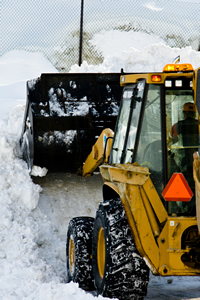Categories: At-risk populations, Stress
January 28th, 2013 2:19 pm ET -
J. Paul Leigh, Ph.D. and Juan Du, Ph.D.

If workers earning low wages didn’t have enough stressors in their lives, they can now add hypertension to the list. Our new research finds that low wages are a risk factor for hypertension among working people. The research was recently published in the European Journal of Public Health, “Are Low Wages Risk Factors for Hypertension?”, and was partially funded by NIOSH.
Whereas low Socio-economic status (SES) has been linked to hypertension, the reasons why are unclear. This is the first study to examine wages, the largest component of income (one part of SES), as a risk factor for hypertension. Why is this important? Wages are an indicator of job quality and may be linked to feelings of self worth. Low wages can also create financial stress for families that find themselves short of funds to pay for rent, electricity, heat, and gas for their cars. Additionally, there are steps policy makers can take to adjust wages. For example, governments can raise minimum wages, make it easier for unions to organize, and increase the pay of low-wage government workers.
 2 Comments -
Read more
2 Comments -
Read more

Categories: At-risk populations, Cancer, reproductive and cardiovascular diseases, Emergency response, Outdoor work, Personal protective equipment, Respiratory health
July 13th, 2012 4:40 pm ET -
Corey Campbell and Liz Dalsey

Photo courtesy of Todd Wyckoff, New Jersey Forestry Services
Wildland fires continue to increase in the Western United States as hot, dry and windy conditions persist, resulting in an extended fire season and factors conducive to fires. Currently, drought conditions are prevalent in the West due to low snow-pack levels, below average rainfall, record setting temperatures and high winds, resulting in a greater than average number of fires this year. Since January 2012, over 32,000 fires have burned almost 3.3 million acres in the US. [NIFC, 2012a]. Additionally, in the last 50 years, there has been a general increase in the occurrence and severity of forest wildfires in the US, as over 5 million wildfires have burned over 206 million acres [NIFC, 2012b].
When wildland fires occur in the Wildland Urban Interface (WUI), the area where houses meet undeveloped land, they can easily become catastrophic because a large number of people, homes and structures are at-risk. When a fire ignites in these areas, a quick and aggressive response from wildland fire agencies and wildland fire fighters is required.
 13 Comments -
Read more
13 Comments -
Read more

Categories: At-risk populations, Training, Young Workers
July 9th, 2012 8:00 am ET -
Dawn Castillo, MPH; Rebecca Guerin, MA; Andrea Okun, DrPH
 Are you the parent of a teen or young adult? Chances are he or she is looking for or has found a summer job. Work provides teenagers with job skills, independence, and unique experiences that help them transition to adulthood. Despite the benefits of work for young people, a number of hazards exist in the work environment that put them at risk for injury, illness and even death. Every minute a young worker is injured on the job[i]. Adolescents and young adults (age: 15–24 years) suffer approximately twice the rate of occupational injuries as older workers[i]. The United States has set a goal of reducing the incidence rate of occupational injury by 10% among adolescents aged 15–19 years old by 2020[ii].
Are you the parent of a teen or young adult? Chances are he or she is looking for or has found a summer job. Work provides teenagers with job skills, independence, and unique experiences that help them transition to adulthood. Despite the benefits of work for young people, a number of hazards exist in the work environment that put them at risk for injury, illness and even death. Every minute a young worker is injured on the job[i]. Adolescents and young adults (age: 15–24 years) suffer approximately twice the rate of occupational injuries as older workers[i]. The United States has set a goal of reducing the incidence rate of occupational injury by 10% among adolescents aged 15–19 years old by 2020[ii].
While employers have the biggest responsibility to reduce occupational injuries among adolescent workers, others have crucial roles to play as well. The young workers themselves must follow the safe work practices established by their employers. Schools, labor unions, and federal and state agencies also bear responsibilities. Parents, like you, also play a vital role in protecting young people in the workplace.
 7 Comments -
Read more
7 Comments -
Read more






